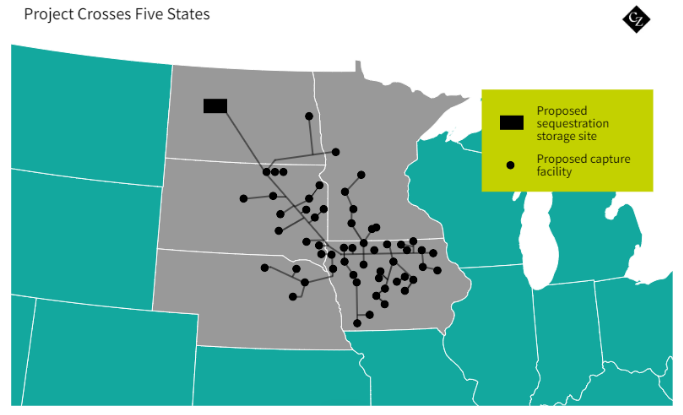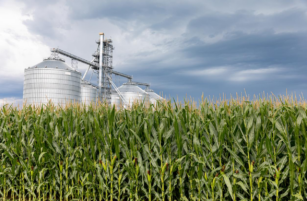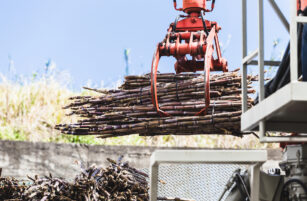Insight Focus
Summit Carbon Solutions was granted permission for a 690-mile CO2 capture pipeline. The company is now seeking to increase the project by 50%. This will help to reduce the carbon intensity of ethanol production, making it more viable as a feedstock for sustainable aviation fuel.
CO2 Pipeline Gets Green Light
Following the June 25 approval by the Iowa Utilities Commission (IUC) of Summit Carbon Solutions’ CO2 pipeline project, the company said it will seek to grow the proposed 690-mile pipeline system by 50%.
Summit Carbon Solutions is currently partnering with 57 ethanol plants across five midwestern states and has signed voluntary easement agreements with 75% of Iowa landowners along the pipeline’s route.
The CO2 pipeline network in the US exceeds 5,000 miles but is far surpassed by the country’s nearly 260,000-mile hazardous liquid pipeline network and nearly 3-million-mile natural gas pipeline network, according to data from the US Energy Information Administration (EIA).
The company said the approval represents a significant milestone not for just Summit Carbon Solutions, but for the entire agriculture industry as it seeks access to new and emerging markets, like sustainable aviation fuel, by lowering ethanol’s carbon intensity score (CI).
Backlash from Landowners
Summit is currently seeking pipeline permits in North Dakota and South Dakota. Some opponents of the pipelines have said the project could have a detrimental environmental impact in North Dakota. A group of landowners have voiced resistance to the company’s plans to build a pipeline across or store carbon dioxide under their property.
The pipeline network must substantially increase to achieve the country’s net zero goals. Estimates of the CO2 pipeline infrastructure needed to accommodate future large-scale carbon capture projects in the US vary but range from 20,000 to 96,000 miles, according to the Great Plains Institute and others.
Summit told news sources last week that it intends to proceed with expansion requests for the system starting in late August. The first meeting would be August 26 in Adams County, Iowa. Meetings will also be held in 22 other counties. The 14 proposed offshoots to additional ethanol plants from Summit’s initial proposal would increase the size of the system in Iowa by about 341 miles — or about 50%.
Project Has Strong Green Credentials

The system will capture carbon dioxide from the fermentation process of biorefineries, such as ethanol plants, compress the captured CO2, and channel it to North Dakota, where it will be permanently stored underground in deep geologic storage locations. Doing so will drastically reduce the carbon footprint of ethanol production and enhance the long-term economic viability of the ethanol and agriculture industries.
Once completed, Summit says the project will be the largest carbon capture and storage project in the world. The project will have the capacity to capture and permanently store up to 18 million tons (16.3 million tonnes) of CO2 every year. That’s the equivalent of removing 3.9 million vehicles from roads annually.












